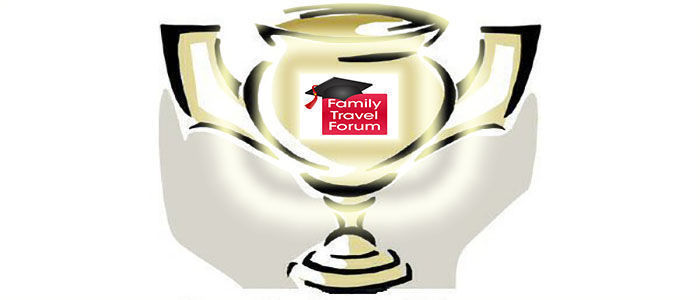Walking into the Memorial Peace Park in Hiroshima, Japan I fully expected my classmates and I to get dirty looks we were in fact Americans and our relatives may have helped in the development of the atomic bomb, that had destroyed so many Japanese lives. Instead we were greeted with smiles. A group of elementary school children spotted us and asked in English if we would help them with their homework. They were learning about the different cultures and geographical locations of people. They shared bright smiling faces with us and thanked us for our help.
â–º honorable mention 2012 TEEN TRAVEL WRITING SCHOLARSHIP
We continued walking and came upon a beautiful manmade fountain. In the middle of the fountain, there appeared to be a small bonfire on a stand. Asking the tour guide about it I found out that this flame was more than just a spontaneous burn rather a necessity to the park. This flame was a wish, a hope, and a prayer. The flame was to burn until all nuclear weapons were destroyed in every country. Unfortunately most of the Japanese around me viewed it as an eternal flame. In their minds as sad and scary as it was, the flame would burn until the end of time. That brought sadness to my heart although I hated to admit it their thoughts were probably correct. Nuclear war seems to have become the war of the future.
We walk a couple more steps and came to a small concrete arch. Looking through it I see the flame and one of the only buildings left standing after the bomb. This building’s insides were completely wiped clean yet the building still stands. A ghost of the past. A symbol of devastation. Under the arch, there are bottles of water for all the victims of the bomb because that is what all of them longed for. After the bomb, people that hadn’t suffered sudden death journeyed to the river hoping for relief of their thirst. Unfortunately, radiation poisoning was in the river and those who made it through the blast died from the water’s poisons.
The last thing we saw was the Children’s Peace Monument that had been solely funded by the children of Japan. On an architectural level, this was a beautiful monument. Made of three connecting arches it stood two and a half stories tall. On the top, there was a metal sculpture of Sadako Sasaki, a young Japanese girl that had been at home when the bomb had gone off. She survived the blast and showed no signs of radiation poisoning until she was twelve and developed radiation-induced leukemia and passed away in 1955.
Above Sadako’s head is a golden paper crane. The crane holds special meaning for the children of Japan and there is a legend that if you fold a thousand you get a wish. Sadoko folded cranes until her death but she fell short of a thousand. Her classmates folded the last of them and buried them with her. My group delivered all of our paper cranes we had made in class putting them in a special glass case where people from all around the world brought cranes in memory of the lost children. Seeing all the cranes made me feel all the love that the world has for one another even if we don’t always see eye to eye.
In this one park I felt the love and sadness of the world. The hope to no more hate and the wish for no more crying. We live in a beautiful, world shouldn’t we make it last for many generations to come.
Dear Reader: This page may contain affiliate links which may earn a commission if you click through and make a purchase. Our independent journalism is not influenced by any advertiser or commercial initiative unless it is clearly marked as sponsored content. As travel products change, please be sure to reconfirm all details and stay up to date with current events to ensure a safe and successful trip.





